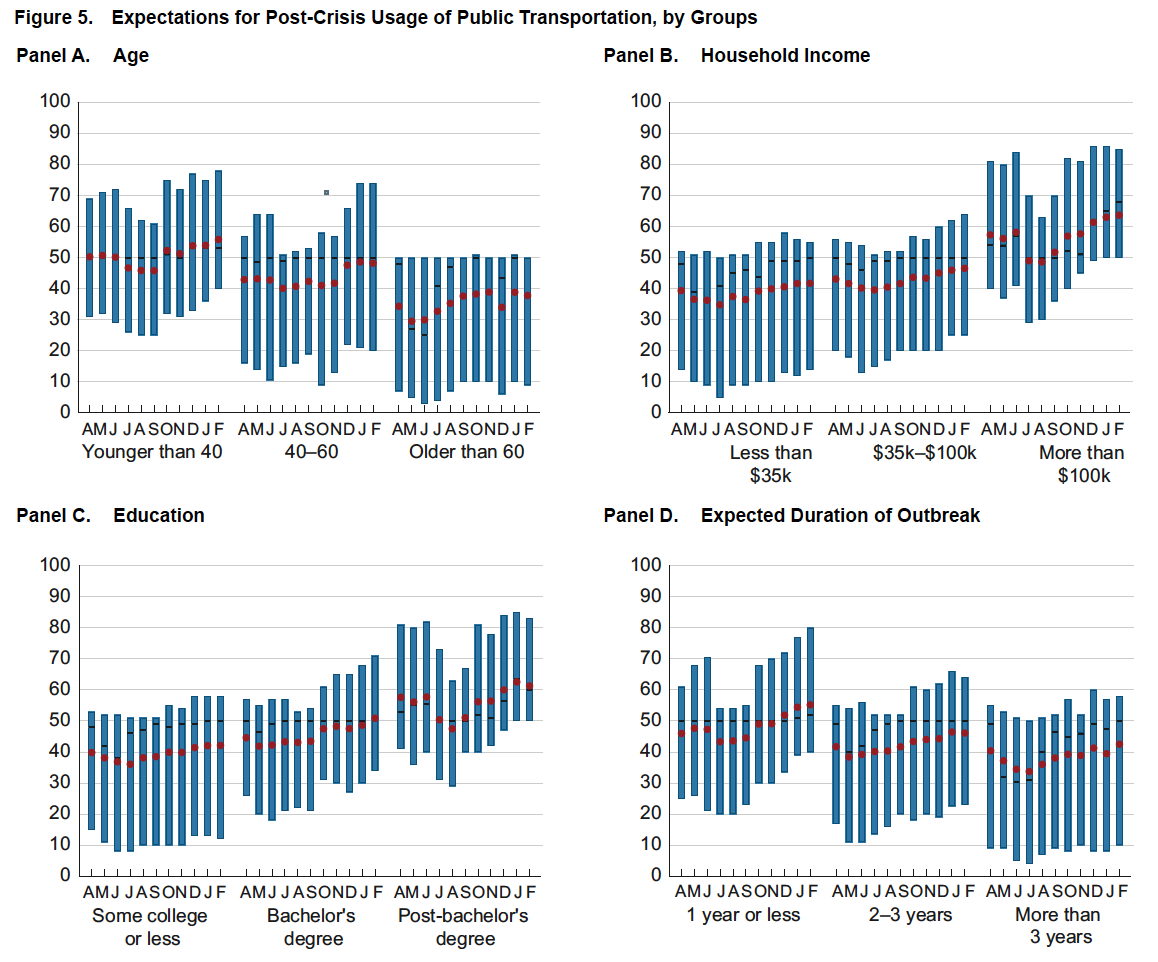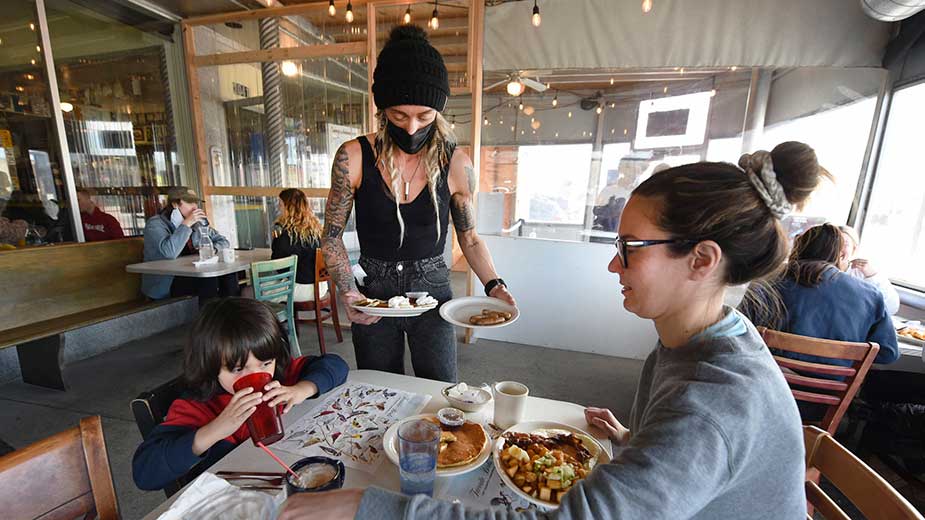Fed Survey: Patrons Expect to Return to Sectors Hit Hard by Pandemic
CLEVELAND – A survey conducted by economists at the Federal Reserve Bank of Cleveland shows most people expect to visit restaurants and hotels, attend crowded events and use of public transportation once the pandemic subsides, but that return isn’t even across age and income levels.
As part of its ongoing Consumers and COVID-19 survey project, researchers at the Federal Reserve branch have seen a U-shaped pattern in the expected future use of the sectors. As the number of new virus cases rose through the summer, the outlook turned more pessimistic before rebounding around October, an upswing that’s continued through February.
“This pattern raises the potential for a strong rebound in spending on services in high-contact industries, where activity has been curtailed because of the pandemic. In particular, we find that individuals in higher-income households expect to sharply increase their use of these services after the pandemic,” wrote the report’s authors.
The report, released April 12, was written by Cleveland Fed vice president Edward Knotek II, research analyst Michael McMain and senior research economist Raphael Schoenle, along with the University of Tubingen’s Alexander Dietrich, University of York’s Kristian Ove Myrseth and the University of Chicago’s Michael Weber.
In the most recent month of polling – February – the survey found the post-pandemic use of hospitality services and public transportation, as well as attendance of crowded events, tended to be “about the same” as pre-pandemic levels.

“It suggests that many consumers seek to return to their old patterns, even after an extended hiatus. In other words, it is not a foregone conclusion that post-pandemic consumer behavior will be radically different in all ways from what it had been pre-pandemic,” the report says.
However, separating the results out by age and income show drastic differences in how groups will return to the sectors. For those older than 60, the expected use of hospitality services after the pandemic has hovered in the mid-40s – 50 represents “about the same” usage as before the pandemic – since July, with a dip as cases surged at the end of 2020. Meanwhile, the under-40 age range’s expectation only dropped below 50 in July and approached 60 by February.

Sorting by income level, those earning less than $35,000 per year have gained confidence since mid-summer 2020, but are still shy of reaching “about the same” use of hotels, restaurants and bars. For the $35,000 to $100,000 income range, expectations have trended generally upward since July and are now slightly above pre-pandemic levels. Finally, those earning about $100,000 per year only dropped below 60 in July, August and September; currently, that income range’s expectation of using hospitality services are at the highest level since the pandemic began.
The same trends occur in the survey’s questions about the use of public transportation and attendance at crowded events. Younger people expect to increase their use after the pandemic, while older people expect to use the services and attend events less.
“Older Americans have been especially impacted by deaths due to COVID-19, and individuals in this age group would therefore be more likely to have lost a spouse, friend, or contemporary to the virus than would individuals in other age groups. In addition, members of this group have suffered more severe adverse health outcomes, such as hospitalizations, because of the virus,” the report said. “Some economic models and other empirical evidence find that individuals’ expectations are affected by recent experiences.”

And those earning more expect to increase their use, while lower incomes won’t return to pre-pandemic spending.
“These results line up with observations on the inequalities created by the pandemic, as on average higher-income households have been less affected by job losses and have amassed more savings during the pandemic from reduced spending on services, which may support pent-up demand on those services from this group as the recovery proceeds,” the report says.
The full commentary published by the Cleveland Fed can be read HERE.
Pictured: Brittany Ostrowski brings breakfast to Laura Miller and her son Arjun Nair, 4, as they enjoy the patio area at Blue Plate Diner on Friday, March 12, 2021, in Salt Lake City. (Francisco Kjolseth/The Salt Lake Tribune via AP)
Copyright 2024 The Business Journal, Youngstown, Ohio.



